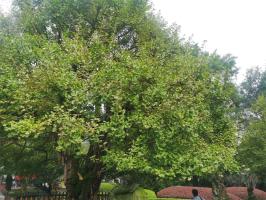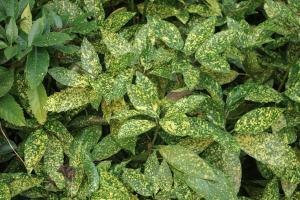Introduction
It is a known fact that trees and plants play a crucial role in regulating the Earth's atmosphere by absorbing carbon dioxide and releasing oxygen through the process of photosynthesis. The question remains, how much carbon dioxide do trees and plants consume, and how important is their role in mitigating climate change?
The Role of Trees and Plants in Carbon Sequestration
Trees and plants act as carbon sinks, absorbing and storing carbon dioxide from the atmosphere. According to the Food and Agriculture Organization (FAO), trees and forests store roughly 296 gigatons of carbon, which is equivalent to nearly 90 years worth of global carbon dioxide emissions. In addition to their storage capabilities, trees and plants also absorb carbon dioxide through photosynthesis. It is estimated that approximately 25% of carbon dioxide emissions from human activities are absorbed by forests and other vegetation.
The Impact of Deforestation on Carbon Sequestration
Despite the significant role that trees and plants play in regulating the Earth's atmosphere, deforestation continues to be a major contributor to greenhouse gas emissions. Deforestation results in the loss of carbon sinks, reducing the amount of carbon dioxide that can be absorbed and stored. It is estimated that deforestation contributes to roughly 10% of global carbon dioxide emissions.
The Importance of Forest Conservation and Afforestation
Protecting existing forests and implementing afforestation programs can play a crucial role in mitigating climate change. Conserving existing forests can help maintain the existing carbon sinks, while planting new trees and vegetation can increase carbon sequestration capabilities. In addition, forests provide a myriad of other benefits such as reducing soil erosion, promoting biodiversity, and providing habitats for wildlife.
The Limitations of Trees and Plants in Carbon Sequestration
While trees and plants are a critical component in mitigating climate change, they have limitations in terms of their ability to absorb and store carbon dioxide. As trees and plants age, their carbon sequestration capabilities decrease. Additionally, trees and plants can only absorb a finite amount of carbon dioxide, meaning that they alone cannot solve the problem of climate change.
Conclusion
In conclusion, trees and plants play a vital role in absorbing and storing carbon dioxide from the atmosphere, and their conservation and afforestation are essential strategies in combating climate change. However, we must also pursue additional measures to reduce greenhouse gas emissions and invest in new technologies that can help mitigate the impacts of climate change. By working together, we can preserve our planet for future generations.

 how many times do yo...
how many times do yo... how many planted tre...
how many planted tre... how many pine trees ...
how many pine trees ... how many pecan trees...
how many pecan trees... how many plants comp...
how many plants comp... how many plants can ...
how many plants can ... how many plants and ...
how many plants and ... how many pepper plan...
how many pepper plan...
































